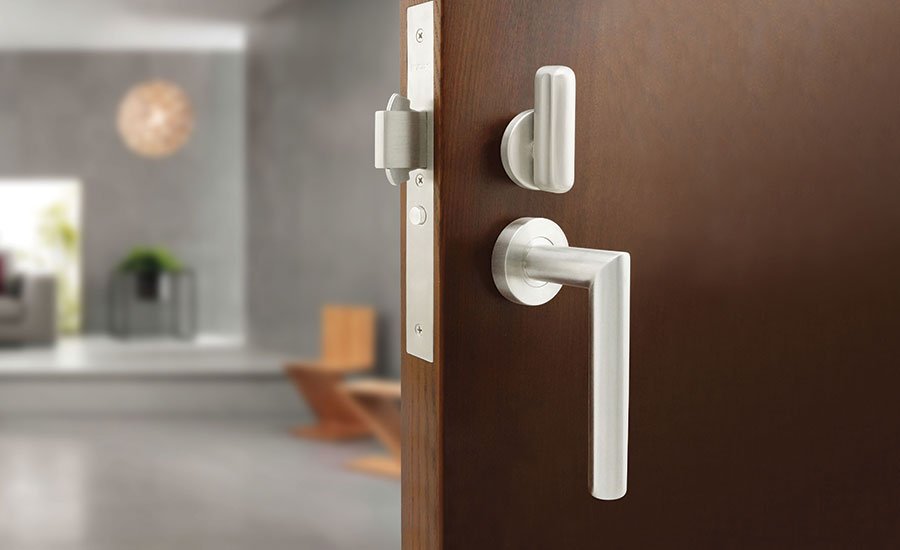Door hardware plays a crucial role in both the functionality and aesthetics of doors in residential, commercial, and industrial settings. From locks and handles to hinges and closers, door hardware encompasses a wide range of components that enhance security, ease of use, and overall design.
In this comprehensive guide, we’ll explore the various types of door hardware, their purposes, and essential factors to consider when choosing the right options for your needs.
Types of Door Hardware
Door Handles and Knobs
One of the most noticeable aspects of any door is its handle or knob. There are various styles available, including:
- Lever Handles: These are common in commercial buildings and residential spaces for easy grip and accessibility.
- Knobs: Often found in traditional homes, requiring a twisting motion to operate.
- Pull Handles: Frequently used for sliding doors, glass doors, and entrance doors.
Locks and Latches
Locks and latches provide security and privacy for different types of doors. Some of the most common options include:
- Deadbolt Locks: A high-security lock typically used on exterior doors.
- Mortise Locks: Embedded within the door, offering enhanced security.
- Keypad and Smart Locks: Digital alternatives that provide keyless entry through passcodes or biometric access.
- Privacy Latches: These are used for interior doors, such as bathrooms and bedrooms.
Hinges
Hinges are essential for door movement and durability. Common types include:
- Butt Hinges: The most standard hinge type, used in homes and offices.
- Continuous Hinges (Piano Hinges): Provide support across the entire length of the door.
- Pivot Hinges: Ideal for heavy doors, allowing smooth rotation.
- Spring Hinges: Automatically close doors, often used for fire doors or security doors.
Door Closers
Door closers ensure doors shut automatically, improving safety and energy efficiency. These come in different types:
- Overhead Closers: Mounted at the top of the door and commonly seen in commercial buildings.
- Concealed Closers: Hidden within the door frame for a sleek look.
- Floor Closers: Often used in glass doors or heavy-duty applications.
Door Stops and Holders
Door stops prevent doors from damaging walls, while holders keep them open when needed. Types include:
- Wall-Mounted Door Stops: Installed on walls to absorb impact.
- Floor Stops: Placed on the floor to stop the door from opening too far.
- Magnetic Door Holders: Hold the door open and release it when needed.
Thresholds and Weather Stripping
These components help seal gaps and improve insulation around doors:
- Thresholds: Installed at the base of doors to provide a seamless transition and prevent drafts.
- Weather Stripping: Reduces air leakage and improves energy efficiency.
Choosing the Right Door Hardware
Selecting the best door hardware depends on multiple factors, including security, functionality, and aesthetics. Here are some key considerations:
Security Needs
For exterior doors, prioritize high-security locks like deadbolts and smart locks. Commercial spaces may require advanced access control systems.
Door Material and Weight
Heavy doors need robust hinges and strong handles, while lightweight doors can use simpler hardware.
Style and Aesthetics
Choose finishes and designs that match your interior or exterior décor. Popular finishes include brass, stainless steel, matte black, and antique bronze.
Accessibility and Convenience
When selecting door hardware, accessibility and convenience are essential factors, especially for individuals with mobility challenges, the elderly, or those who require effortless entry. Lever handles are a preferred choice over traditional knobs as they require minimal grip strength and can be easily operated with an elbow or forearm. Additionally, smart locks offer keyless entry options, such as PIN codes, biometric scanners, or remote access via smartphone apps, making them highly convenient for busy households or commercial properties.
For high-traffic areas, automatic door closers ensure smooth, hands-free operation, which is beneficial in public buildings, offices, and healthcare facilities. Motion-sensor doors further enhance accessibility by eliminating the need for physical contact, creating a seamless experience for users.
Another crucial aspect is compliance with ADA (Americans with Disabilities Act) standards, which mandate specific door hardware features, such as lever handles positioned at an accessible height and doors that require minimal force to open.
By incorporating well-designed, user-friendly door hardware, both residential and commercial spaces can improve accessibility, enhance safety, and provide a more inclusive environment for everyone, ensuring that doors are easy to use without compromising security or aesthetics.
Durability and Maintenance
Consider weather-resistant and rust-proof hardware for exterior doors to ensure long-lasting performance.
Installation and Maintenance Tips
- Ensure Proper Alignment: Misaligned hardware can affect door functionality.
- Regular Lubrication: Hinges, locks, and handles should be lubricated periodically to prevent wear and tear.
- Upgrade When Needed: If security is a concern, consider upgrading to newer, more secure locking systems.
Conclusion
Door hardware is an essential part of any building, contributing to security, functionality, and design. Whether you’re upgrading your home, installing doors in a commercial space, or enhancing security, choosing the proper hardware is crucial. By understanding the different types of door hardware and their benefits, you can make informed decisions to improve the safety and efficiency of your doors.










Leave a Reply